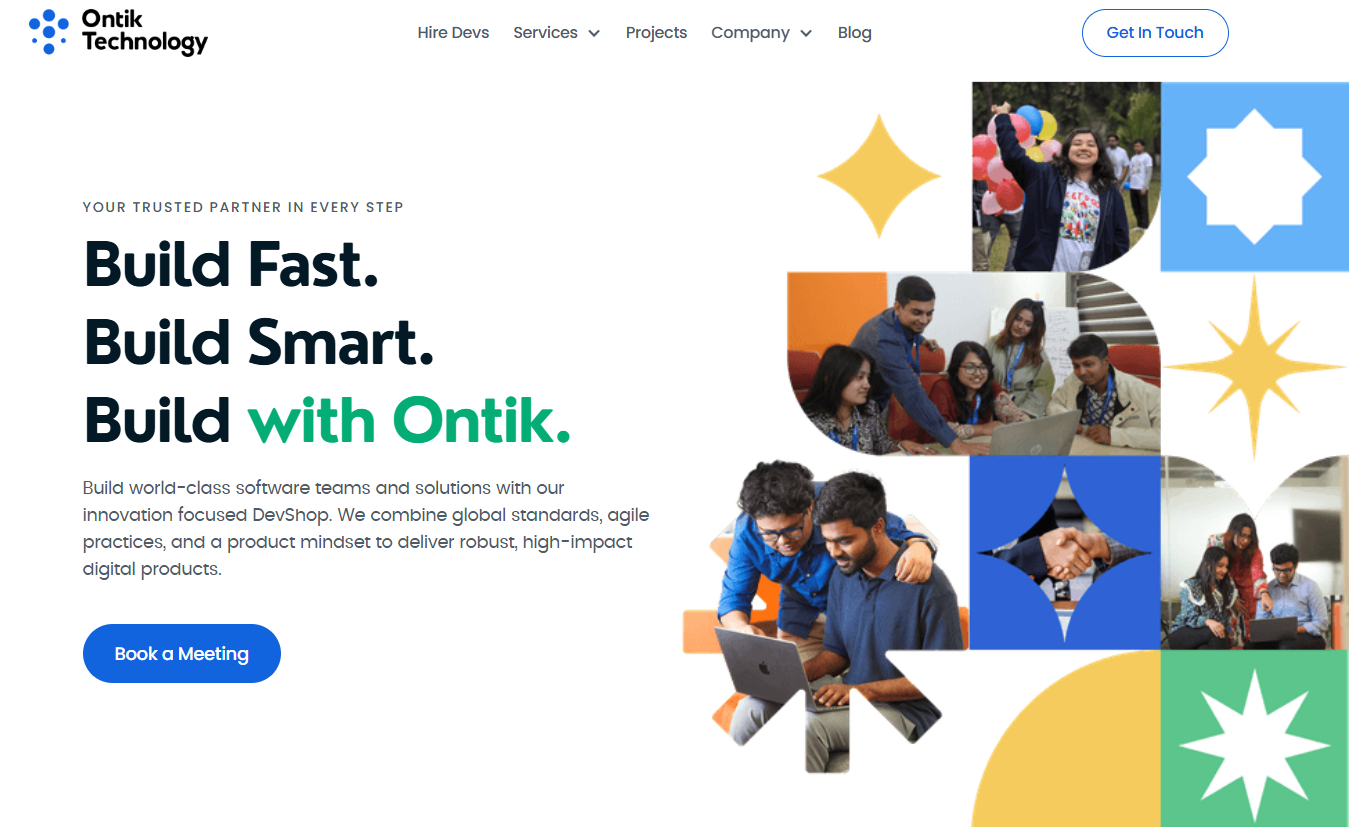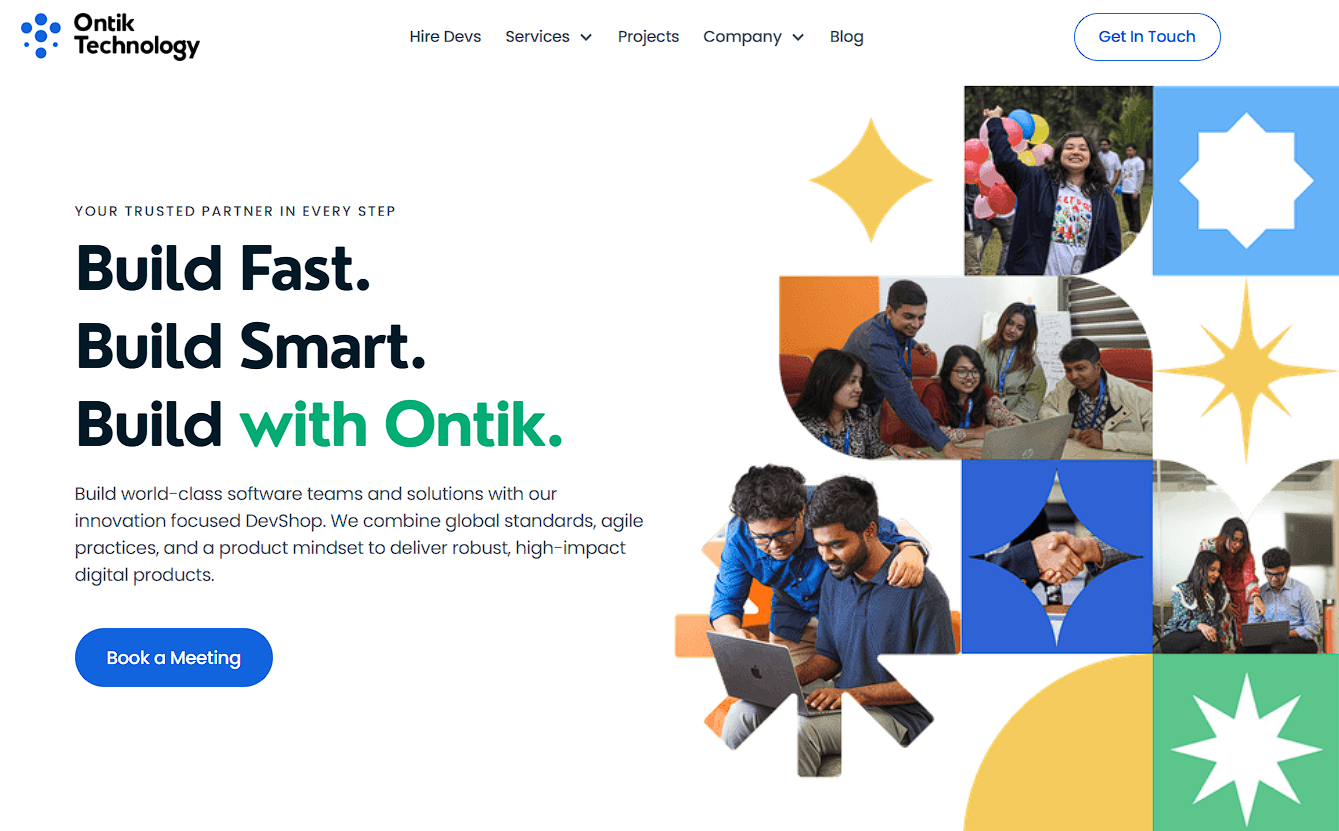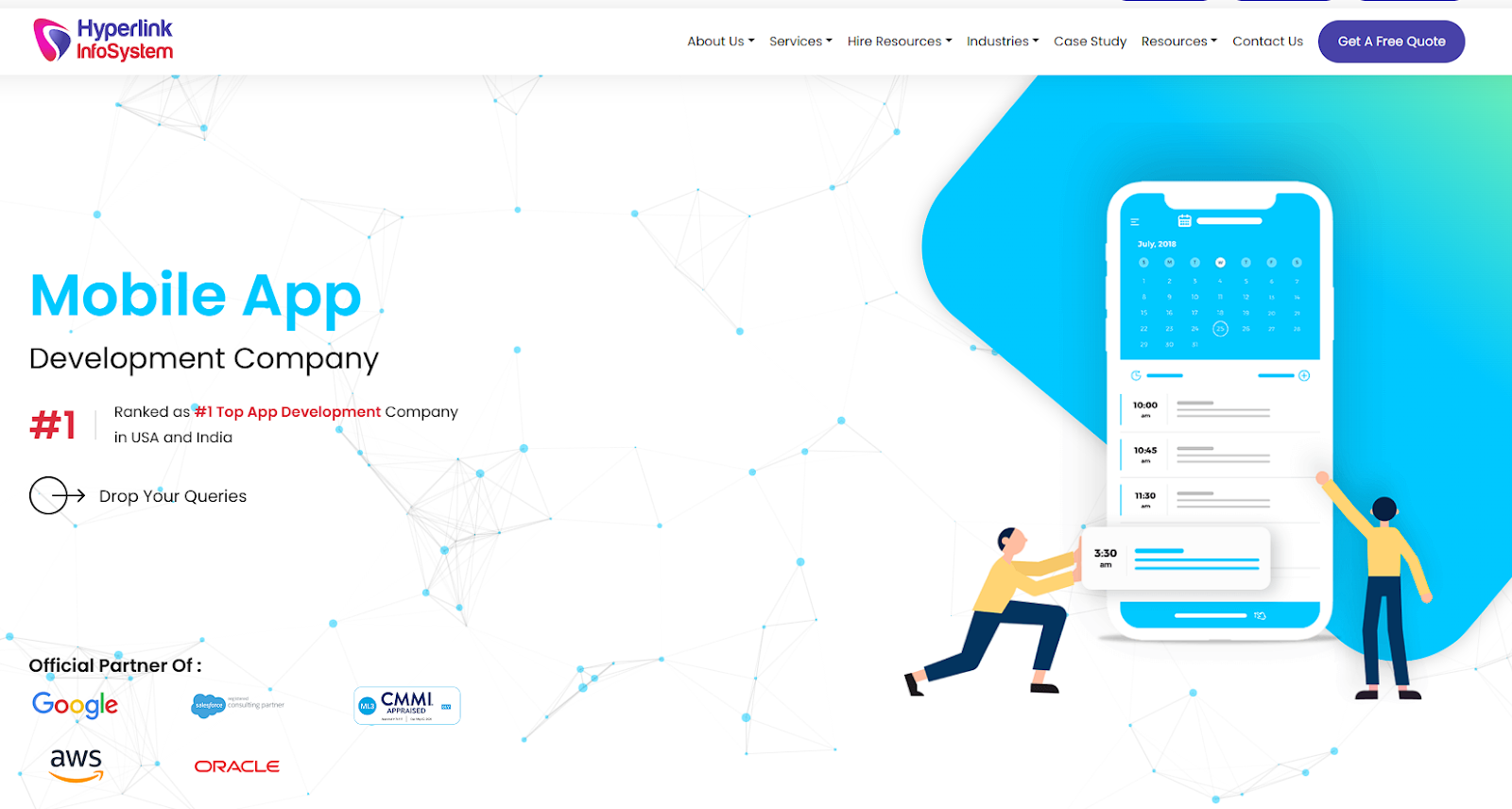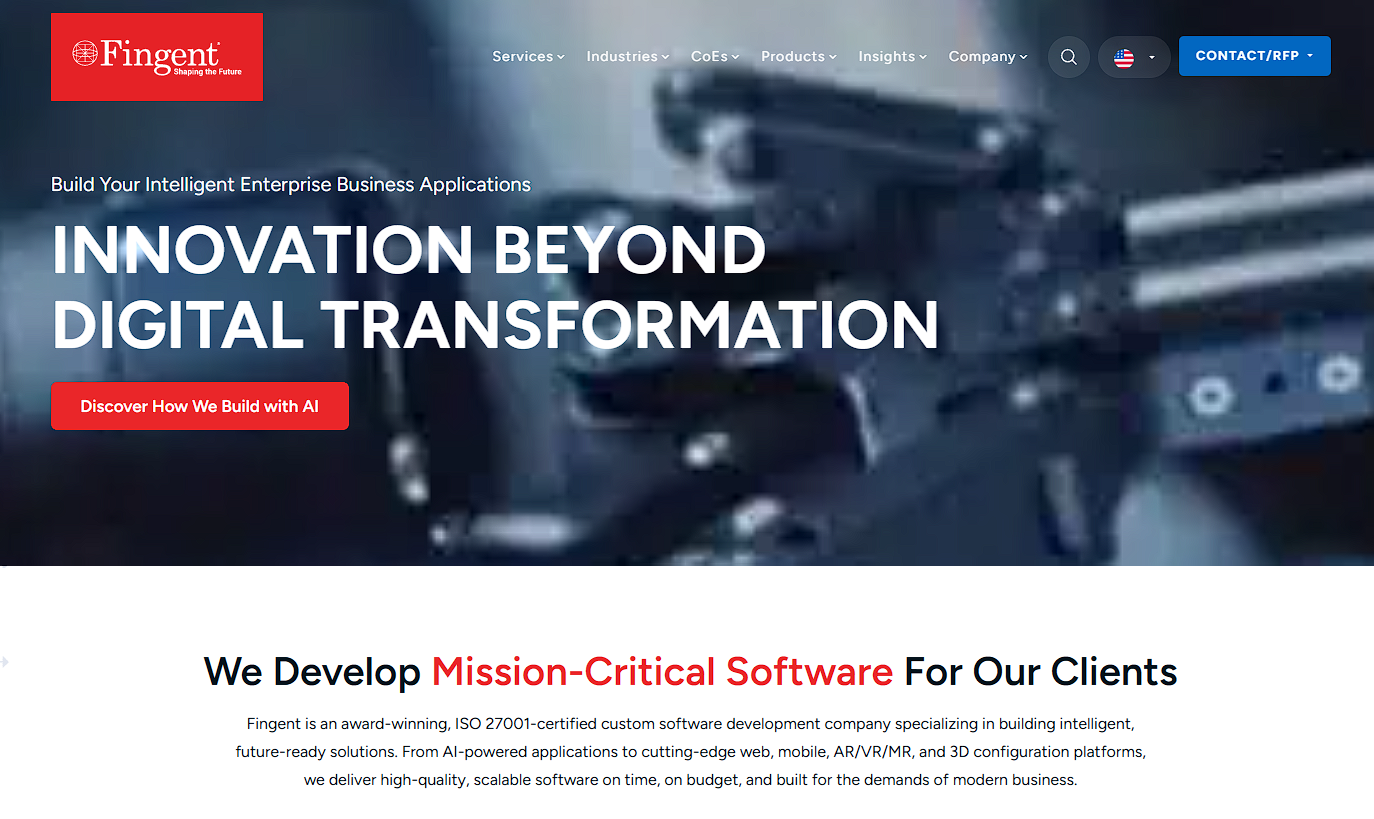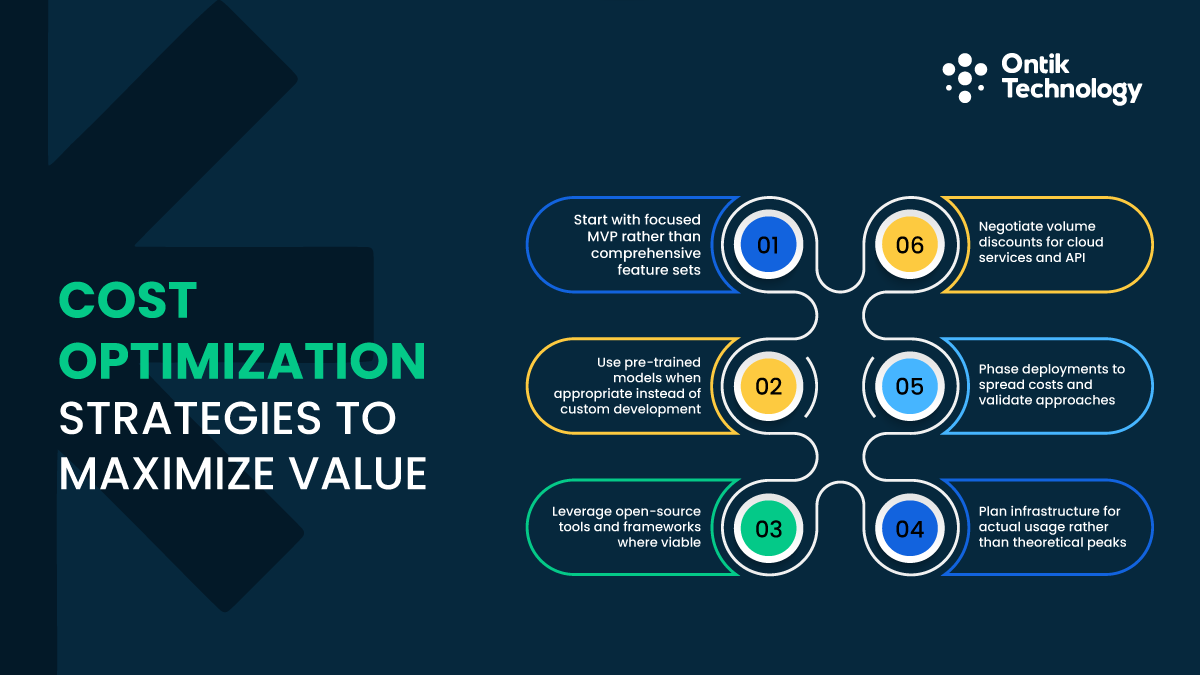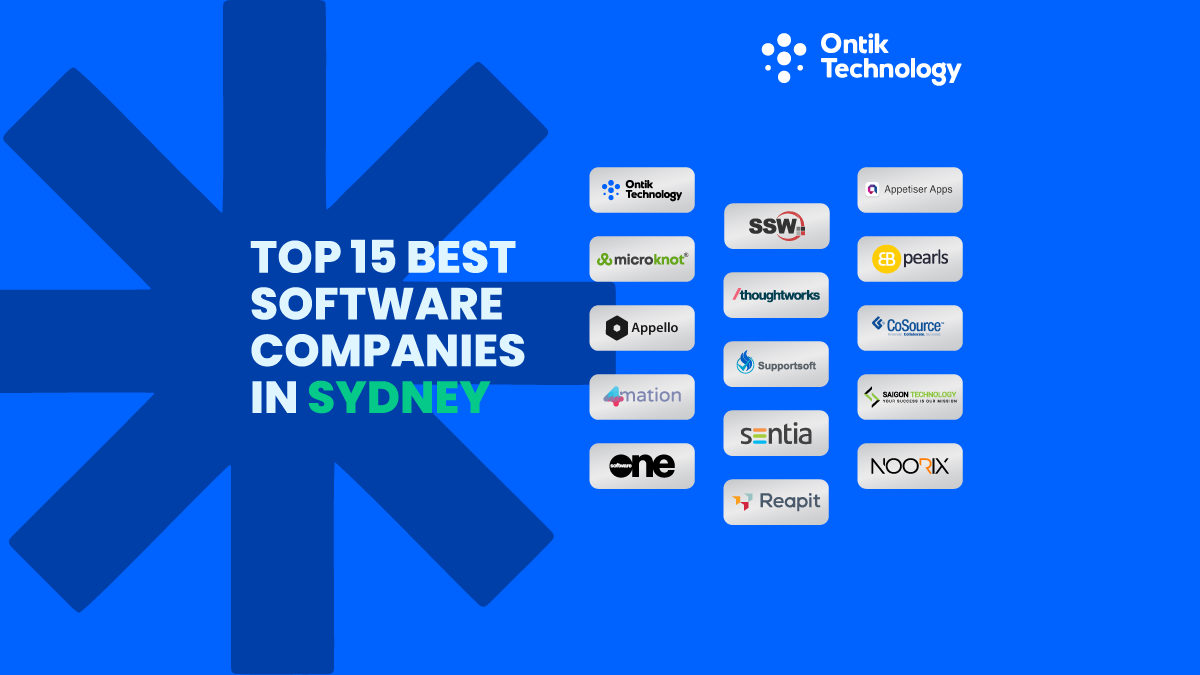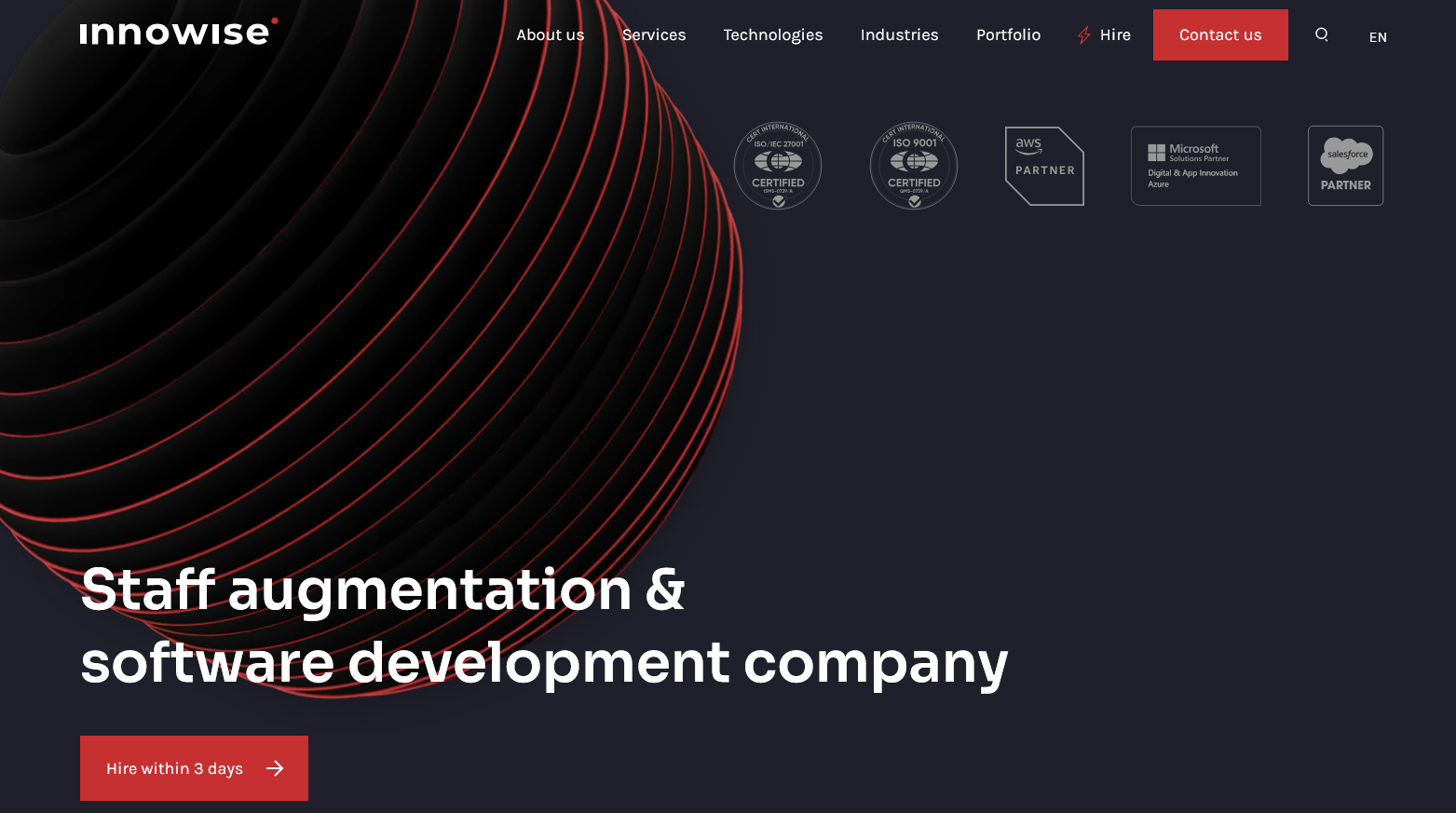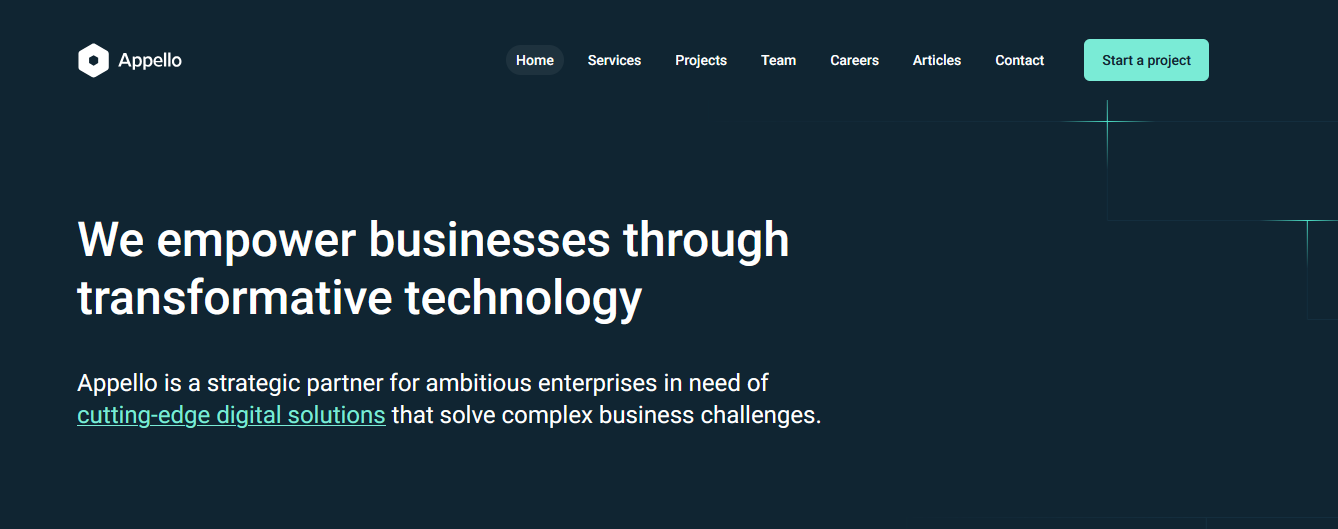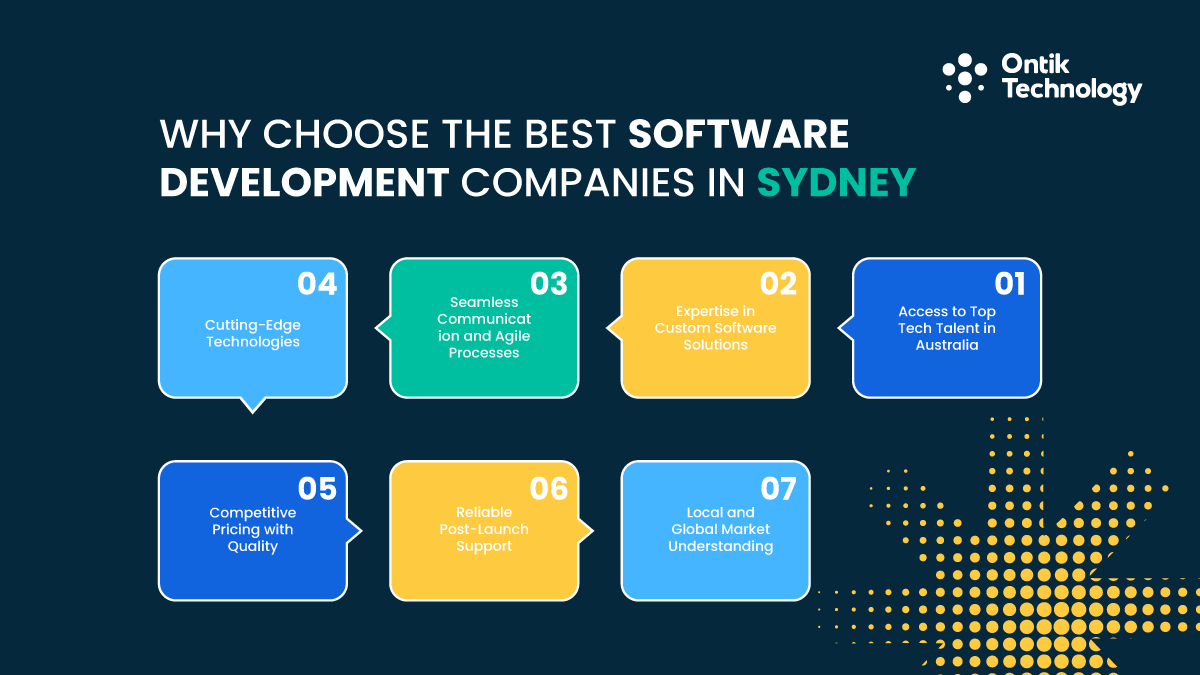Best Practices for Software Development Outsourcing: Top 5 Challenges and How to Solve Them
Thinking of outsourcing your tech? Your organization is in such a position where you are willing to expand your tech team without increasing too much overhead. Or maybe, you are a startup willing to hire a dedicated development offshore team to reduce your investment burn rate.
Or you are a software consulting company and you require software developers regularly. Software development outsourcing is a popular choice among organizations due to its cost savings, ability to hire top talent, and ability to focus on core objectives. But, custom software development outsourcing comes with a hailstorm of challenges if you are not prepared enough about the caveats. As we discuss the industry's best practices for entire software development, we will address some of the potential challenges faced by companies that outsource software development.
What Makes Outsourcing Software Development So Popular

Software outsourcing is popular because it offers several clear benefits:
- Reduces costs: Hiring teams from other countries can save companies money. Startups or small businesses looking to keep costs down will find this especially helpful.
- Working with global talent: Outsourcing allows companies to work with developers from around the world. This makes it easier for them to find the right people for specific projects. Any company can take different outsourcing services for their different projects: Dedicated development teams and team Augmentation.
- Adaptability: Companies can change the size of their development teams quickly according to their current needs. Using this method helps manage changing workloads without adding permanent staff.
- Faster Work Process: Outsourced teams can complete projects faster because they can work different hours across time zones, or because the outsourcing firm might hire more developers for their startups or their organizations. To improve their work process any startup owner or entrepreneurs need to know How to Hire Developers for a Startup and an outsource team can automate the whole project or business process, reducing the business cost.
- Focus: Businesses can focus on their main parts, such as marketing and customer service while leaving the technical details to others.
Outsourcing is a smart decision for companies looking to improve efficiency and expand effectively.
Exploring the Basics of Software Development Outsourcing
IT budgets are heavily dominated by outsourcing, which offers cost savings and access to specialized skills. In countries like Bangladesh, India, and China, lower wages can serve as a competitive advantage to companies in high-cost countries. During the COVID-19 pandemic, remote work became more common, leading to increased IT outsourcing. Now that these challenges are becoming more common, companies are seeking strategic partnerships with outsourcing providers to ensure quality and meet their long-term objectives. In the case of a high hiring cost in their country, any organization or startup needs to hire remote developers. That's why outsourcing software development is the best option for any organization. (CustomerThink) (Squaretalk).
Let's explain what software development outsourcing is before we dive into the challenges. It involves hiring external firms or freelance software developers to design, develop, and maintain software applications. With this approach, companies can save money, tap into specialized expertise, and speed up their software development processes.
Top 5 Common Challenges in Outsourcing Software Development

1. Barriers to Communication And Collaboration
Outsourcing software development presents certain challenges, including bridging communication and collaboration barriers. Due to time zone differences, linguistic barriers, and cultural differences, working with geographically dispersed remote teams can lead to miscommunications, delays, and misunderstandings. This is one of the common outsourcing challenges.
Suppose a U.S.-based company decides to outsource its software project to India's software development firms. Real-time communication can be difficult because of the 12-hour time difference. As a result of language barriers, instructions, and requirements may also be misunderstood. Further complicating collaboration is the influence of cultural differences on the work dynamic and communication style.
2. Assurance and Quality Control
When working with geographically dispersed teams, it is sometimes difficult to maintain a consistent level of quality. The quality of the final product may vary depending on coding practices, testing methodologies, and quality assurance standards. The client, for example, has a strict code review process in place, so that any code added to the main code base must meet specific standards. A company that outsources may not have a well-defined code review process or may adhere to different coding conventions. As a result, the codebase may be inconsistent with naming conventions, handle errors improperly, or use inefficient algorithms, affecting the overall quality.
When outsourcing to another organization or team, their practices might differ from the company's coding standards and quality control procedures. It can lead to inconsistencies in the source code, insufficient documentation, and insufficient testing, which ultimately impacts the quality of the software.
3. Protecting Intellectual Property and Data
Software development outsourcing often involves sharing sensitive data and intellectual property with third parties. A significant concern is ensuring data security, protecting intellectual property rights, and maintaining confidentiality when delegates are located offshore with different legal frameworks. Consider a technology company in Australia outsourcing the development of proprietary software to a company in Bangladesh. Due to sensitive customer data and unique algorithms developed by the client, data security and intellectual property protection are critical concerns.
Business partners may need access to confidential information, customer data, or trade secrets when outsourcing. The possibility of data breaches, unauthorized access, and intellectual property theft always exists. A variety of legal frameworks and regulations govern data protection and intellectual property rights across nations, adding to the complexity of the matter.
4. No Direct Control
It is difficult for the consumer to control the development process when software development is outsourced. In such a situation, it can be difficult to monitor progress, enforce deadlines, and implement changes on time. Assume that a startup in the USA decides to outsource the development of its mobile application to a software development team in Southeast Asia like Bangladesh. Startups are concerned about not having direct control over the development process, as they want to closely monitor progress, enforce deadlines, and provide feedback on time.
Outsourcing can be difficult for companies used to having their development team in-house. As a result, they no longer have direct insight into day-to-day operations and rely on their outsourcing partner to keep them on schedule and meet their specifications. You can say, it's one of the common IT outsourcing challenges associated with software development.
5. Reliance on Outsourcing Providers or Remote Team
The process of outsourcing software development involves relying on third parties for critical aspects. Financial instability or resource limitations at the outsourcing company can impact project timelines. As an example, a multinational corporation decides to outsource a complex enterprise software system to an offshore outsourcing company in South America. Outsourcing companies' capabilities and reliability are crucial to the success of the project.
Outsourcing software development means companies become dependent on their outsourcing partners to deliver the results they expect. However, outsourcing companies have varying levels of stability, reliability, and the ability to scale their resources according to customer requirements.
Outsourcing Software Development: Identifying and Resolving Current Challenges

1. Effective communication and project management
Communicating clearly and effectively is essential to overcoming communication and collaboration barriers. Using project management software, instant messaging platforms, and video conferencing solutions can help achieve this. The use of effective project management methodologies, such as Agile or Scrum, can improve transparency, collaboration, and task monitoring.
Solution: Teams can communicate clearly and efficiently in real time using project management and communication tools. Utilize agile methodologies such as Agile or Scrum to enhance collaboration and adaptability.
Tools:
Slack: A platform for communication and collaboration that integrates with many project management tools.
Asana: A project management tool that helps teams organize and track their work.
2. Quality control and standardized processes
Across geographically dispersed teams, standardized development processes, quality control measures, and rigorous testing protocols are necessary to ensure quality consistency. Defining coding standards, conducting regular code evaluations, and implementing automated testing frameworks are necessary to maintain quality standards. It can be beneficial to have a team or process dedicated to quality assurance.
Solution: Ensure consistent coding standards and automated testing are implemented to ensure a quality product. A dedicated quality assurance team and regular code reviews can further enhance the level of quality control in a project.
Tools:
SonarQube: Continuously inspects code quality to help teams write cleaner and safer code.
Selenium: A framework for testing web apps on different browsers.
3. Ensure that contracts and agreements are strong
Developing solid legal agreements and contracts is essential to addressing data security and intellectual property concerns. A data security clause, an intellectual property clause, a confidentiality clause, and a dispute resolution mechanism should be included in these contracts. By involving legal professionals with experience in outsourcing software development, both parties can ensure their interests are protected.
Solution: Clearly define data security, intellectual property, confidentiality, and dispute resolution in contracts. Engage legal professionals who have experience in international software development outsourcing.
Tools:
DocuSign: An electronic signature platform that speeds up agreement processes and ensures secure document handling.
LegalZoom: Provides access to legal document templates and professional legal advice for drafting contracts.
4. Providing strong governance and oversight
The lack of direct control needs to be mitigated by implementing governance mechanisms and establishing robust oversight mechanisms. An outsourcing partner's activities may be audited, monitored, and reported periodically. A key performance indicator (KPI) and a service level agreement (SLA) can provide insight into progress and ensure accountability.
Solution: Make sure your contracts cover data security, intellectual property, confidentiality, and dispute resolution. Hire lawyers who have experience outsourcing software internationally.
Tools:
DocuSign: A platform for electronic signatures and document security.
LegalZoom: Offers legal document templates and professional legal advice. Visit LegalZoom
5. Expanding outsourcing partnerships
To mitigate risks associated with reliance on a single provider, it is recommended to establish relationships with multiple outsourcing partners. As a result, outsourcing strategies can be more adaptable and resilient. Evaluating potential outsourcing partners based on their expertise, financial stability, scalability, and client testimonials can help identify dependable and sustainable partners.
Solution: Diversify your outsourcing portfolio to mitigate risks. Evaluate potential partners based on their capabilities, financial stability, and client references. This strategic approach can enhance flexibility and resilience.
Tools:
Gartner: Provides research and analysis on IT services providers, helping businesses make informed partnership decisions.
Clutch: A platform for finding and reviewing global service providers including software developers.
6. Cultural and Time Zone Differences
It is common for outsourcing companies to have teams distributed across different countries, which can lead to cultural misunderstandings and coordination difficulties due to the different time zones involved.
Solution: Establish overlapping working hours for teams and conduct regular cultural sensitivity training. Using scheduling tools can also assist in managing time differences effectively.
Tools:
World Time Buddy: A tool for scheduling across multiple time zones. Visit World Time Buddy
Sensitize: An online cultural training resource to help teams understand and respect each other's cultural nuances.
7. Managing Expectations and Scope Creep
It is possible to experience scope creep when the project's requirements are not clearly defined or controlled, resulting in delays and higher costs.
Solution: Use project management tools to define, document, and lock the scope of the project. A regular stakeholder meeting can help keep expectations aligned and scope creep under control.
Tools:
Jira: A project management tool that helps in tracking issues and managing agile projects.
Confluence: A collaboration tool to keep all stakeholders on the same page with project requirements and decisions.
8. Technological Compatibility and Integration
It can be difficult to integrate outsourcing partners' software into your system because of the mismatch in technology.
Solution: Define technical requirements and standards from the start. Use integration testing tools and protocols to ensure compatibility and seamless integration.
Tools:
Postman: An API development and testing tool that can help ensure that all systems integrate well.
Jenkins: An automation server used for continuous integration and testing.
9. Securing and complying with data
When you outsource, you can expose sensitive data to security threats and compliance problems.
Solution: Implement stringent security protocols, conduct regular security audits, and ensure the outsourcing provider complies with relevant data protection regulations.
Tools:
Norton Secure VPN: Provides secure, private connections to ensure data safety during transmissions.
Compliance Manager: A tool to help manage compliance across various regulations, useful for ensuring that all parties adhere to necessary standards. Visit the Compliance manager or project manager.
10. Talent Management and Resource Allocation
It can be challenging to ensure the outsourcing partner has the right talent and that resources are allocated efficiently.
Solution: Regular reviews and updates on resource allocation and project demands can assist in managing talent effectively. Tracking and optimizing resources is easier with talent management software.
Tools:
Smartsheet: An online project management & automation tool that helps in resource allocation and management. Visit Smartsheet
LinkedIn Talent Solutions: Useful for understanding the capabilities of the outsourcing team and planning future needs. Visit LinkedIn Talent Solutions
By addressing these challenges with strategic planning and proactive measures, businesses can effectively leverage the benefits of outsourcing while minimizing the downsides. Engaging with experienced partners and utilizing the right tools and practices are key to successful software development outsourcing.
Quick Overview: Key Challenges and Solutions in Outsourcing Software Development
Industry Best Practices for Software Development Outsourcing
You can boost your business's growth and innovation by outsourcing software development also you need to know about the steps to successfully outsource a software development project and you should know about the Industry's Best Practices for Software Development outsourcing.
Here are 15 software development best practices that align with industry standards:
- Establish a clear scope for the project: Start every project by explicitly defining what you need to achieve. Software development best practices emphasize this clarity.
- Communicate effectively: To ensure everyone is on the same page, industry best practices often emphasize the use of modern tools and software.
- Set Clear Objectives: To ensure alignment and accurate delivery, set and communicate your goals and expectations.
- Select the Right Partner: A partner who follows the industry's best practices for software development can have a substantial impact on your project's success.
- Select the Right Pricing Model: The right pricing model should reflect industry best practices and may be fixed, hourly, or retainer-based.
- Use Project Management Tools: Best practices for software development include tools that enhance collaboration and efficiency.
- Performing regular progress checks: Following best practices for software development, conduct regular reviews to stay aligned with project goals.
- The importance of cultural sensitivity: A key aspect of software development best practices is embracing cultural differences to enhance team dynamics and outcomes.
- Ensure Data Security: Maintain robust security protocols in alignment with industry best practices for software development to protect your data.
- Define Clear Roles: Setting clear roles and responsibilities for your team is essential to software development best practices.
- Maintain Documentation: Document all processes thoroughly, a key recommendation for software development best practices.
- Focus on Quality Over Cost: Make sure your outsourcing partner is reliable and quality, a principle that's central to best practices.
- Effective Change Management: Set up a structured change management process, which is crucial to software development best practices.
- Creating a Positive Work Culture: Creating a positive work culture within your team aligns with industry best practices for software development.
- Optimize continuously: Continuous improvement is a key part of industry best practices for software development.
Implementing these strategies, which adhere to the industry's best practices for software development, will result in more efficient, innovative, and successful software development.
Outsourcing Software Development: Expert Advice
Software development is competitive, so partnering with a skilled team or reputable outsourcing firm is key. For your software development needs, we suggest collaborating with an established company like Ontik Technology.
In the industry, Ontik Technology is well known for its expertise across a variety of programming languages and technologies. Dedicated developers are at the heart of the organization and are passionate about developing powerful and efficient software solutions. As an experienced developer with a strong track record, Ontik Technology has successfully delivered projects in a variety of industries.
Contact us today for a detailed discussion about your project's requirements and to take advantage of the full potential of software development.
Final Thoughts
The key to success is to manage outsourcing software development challenges effectively and follow industry best practices. It's easier to execute a project if you overcome obstacles like communication gaps, security concerns, and cultural differences. Software development projects can be made more efficient and successful by using best practices like clear project definitions, stringent security protocols, and careful partner selection. Businesses can maximize outsourcing benefits while fostering innovation and maintaining a competitive edge by emphasizing these practices. Software development is all about picking the right outsourcing partner, like Ontik Technology. Using the right strategies, companies can make the most of outsourcing software development's advantages for growth and innovation.




